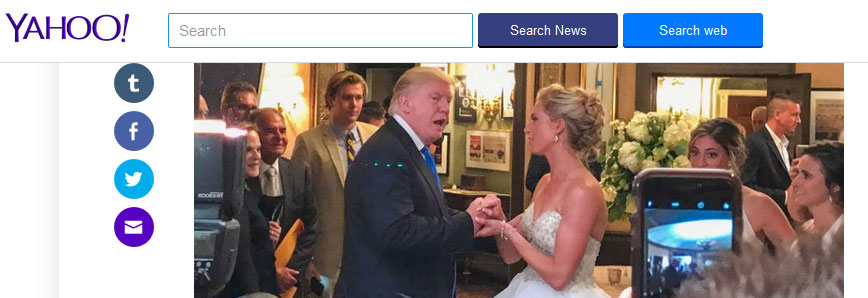A US judge has rejected Esquire Magazine‘s claim that it qualified for the Fair Use defence to copyright infringement when it stole and published a newsworthy image. It appears that viral image cannot be ‘poached’ from social media and used as the basis of an article.

The Fair Use exception to copyright infringement is often successfully used against photographers who file a copyright lawsuit over stolen images.
Fair Use is used if a defendant can prove he or she met a number of loosely-defined factors, with the most critical point being whether the work was ‘transformed’ from the original. Serial image appropriator, Richard Prince, exploits Fair Use by creating questionable art works that sell for tens of thousands of dollars.
It’s worth noting that Australian policy makers are currently considering whether to introduce the controversial Fair Use exception to copyright infringement, which will drastically alter copyright law and work against creatives – but for big publishers.
The Case of Otto V Hearst Communications
In June 2017 US president, Donald Trump, showed up at a wedding he wasn’t invited to at Trump National Golf Club.
Jonathan Otto, vice president at Deustche Bank, who describes himself as a ‘guy with an iPhone’, snapped a photo of the president and sent it to a friend at the wedding. That friend sent the image to a couple of other attendees and eventually it ended up on Instagram without Otto’s permission or knowledge.
The photo of Trump went viral, and by the next day major media outlets – TMZ, CNN, Washington Post, The Daily Mail, and Esquire – were running articles about the president ‘crashing’ the private wedding.
Otto, aware that he could profit from this lucrative new sideline, contacted his lawyers who registered the photo with the US Copyright Office.
The lawyers then filed five copyright infringement suits. Four cases were settled out of court but Esquire, under its parent company Hearst Communications, chose to step into the legal arena.
Hearst’s lawyers argued the published photo was transformed because it was accompanied by written words and additional information, and therefore it constituted Fair Use. They also wove a US First Amendment (free speech) claim into the argument.
However, Judge Gregory Woods found that the caption only recited information already in the photo, and didn’t add anything original.
‘It would be antithetical to the purposes of copyright protection to allow media companies to steal personal images and benefit from the fair use defense by simply inserting the photo in an article which only recites factual information – much of which can be gleaned from the photograph itself,’ said Judge Woods in the court papers. ‘If so, amateur photographers would be discouraged from creating works and there would be no incentive for publishers to create their own content to illustrate articles: why pay to create or license photographs if all personal images posted on social media are free grist for use by media companies, as Hearst argues here?’
Spot on, Judge Woods!
An interesting point discussed by Woods is whether the photo was factual or creative. It seems that a creative image, where a photographer directs elements such as posing and lighting, is worth more than a factual photo, which simply shows a scene.
Fortunately, Otto is a banking executive with the dosh to engage lawyered-up media companies in copyright infringement cases. An ordinary professional photographer would not likely be able muster up the same legal power – unless you’re Peter Lik.
Judge Woods’ ruling is a rare win for photographers and creatives when up against Fair Use. It creates a valuable precedent that will favour photographers in similar scenarios.
However, some argue there’s a more serious US First Amendment issue with the judge’s summary.
The US Freedom of the Press advocacy group says the ruling could have ‘dangerous reverberations for press freedom’, and Fair Use should provide ‘the widest possible berth to journalists’.
‘That decision could effectively give private individuals – particularly individuals with private access to newsworthy people – inappropriate power to shape or limit the visual coverage of public officials, by allowing them to pick and choose which outlets may run those photos, and under what terms.
‘Trump’s appearances at his own business locations, from which he and his family still profit, are widely described as evidence of corruption. Images of the president and other public officials at Trump properties have been the basis of dozens of news stories.’
Judge Woods rejected Hearst’s request for a summary judgement, meaning the case will be heard before a jury. If it stands, Hearst could be liable to pay up to US$150,000 in statutory damages.





Be First to Comment